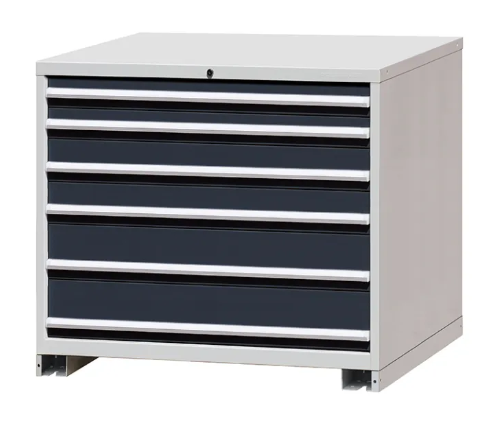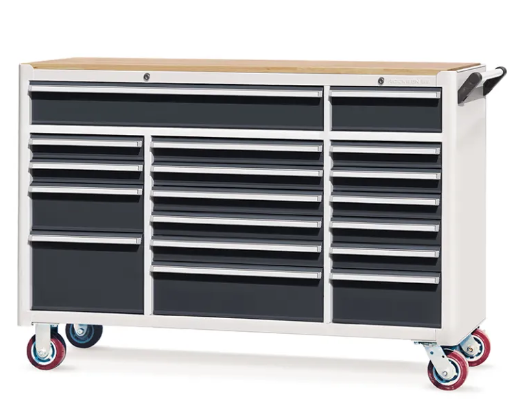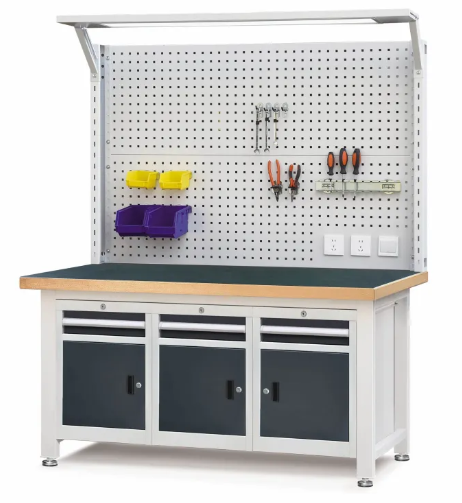ROCKBEN is a professional wholesale tool storage and workshop furniture supplier.
Advantage Of Different Kinds Of Workshop Equipment
A well-equipped workshop is essential for any professional or dedicated hobbyist. However, maximizing productivity and achieving optimal results requires more than just a collection of tools. Strategic organization and efficient workspace design play a critical role in creating an environment where craftsmanship thrives. This guide delves into the essential elements of workshop equipment and their impact on workflow and overall efficiency.
This guide explores how strategic workshop equipment choices can transform your workspace. We'll get into the unique advantages of each type of equipment, helping you create an organized and efficient environment that streamlines your workflow.
Tool Cabinets: The Foundation Of An Organized Workshop
A well-organized workshop is a productive workshop. At the heart of this organization lies the humble tool cabinet – a critical piece of equipment that ensures every tool has its place and is readily accessible. Investing in the right tool cabinet can significantly enhance your workflow, reduce wasted time searching for misplaced tools, and ultimately contribute to a safer and more efficient work environment.
However, selecting the optimal tool cabinet requires careful consideration of various factors to ensure it aligns with your specific needs and workshop environment.
● Size and Capacity: A common mistake is choosing a cabinet based solely on your current tool collection. Instead, anticipate future needs and select a cabinet with ample space for expansion. Overcrowding can lead to disarray, negating the benefits of the organization.
● Construction and Durability: Workshop environments can be demanding. Heavy tools, accidental impacts, and years of use can take a toll on your equipment. Prioritize cabinets constructed from robust materials like heavy-duty steel with a durable powder-coated finish for enhanced resistance against scratches and corrosion.
● Security: Protect your valuable tools with cabinets featuring secure locking mechanisms. This deters theft and prevents unauthorized access, a particularly crucial consideration in shared workspaces.
● Organization: Maximize efficiency with cabinets offering diverse organizational features. Adjustable shelves, drawers with varying depths, and specialized compartments for different tool types are essential. Consider cabinets with integrated tool organizers, dividers, and even built-in power strips for added convenience.
Tool Carts: Mobility Meets Functionality
While tool cabinets provide a central hub for tool storage, tool carts introduce a dynamic element to your workshop. These mobile units bring your tools directly to your project, eliminating the constant back-and-forth trips to a stationary cabinet. This not only saves time and effort but also allows you to adapt your workspace to different projects and tasks.
However, not all tool carts are created equal. Choosing the right one depends on your specific needs and how you envision incorporating it into your workflow.
● Weight Capacity and Durability: Consider the weight of the tools you intend to carry. Opt for a cart with a sturdy frame and robust casters that can handle heavy loads without compromising stability. Look for features like reinforced shelves and durable wheel materials to withstand the demands of a workshop environment.
● Maneuverability: A tool cart should be easy to move around, even in tight spaces. Swivel casters, preferably with locking mechanisms, provide optimal maneuverability and stability. Consider the cart's size and turning radius to ensure it seamlessly integrates into your workspace.
● Organization: Just like tool cabinets, organization is key for tool carts. Look for carts with multiple drawers, shelves, and compartments to accommodate various tool sizes and types. Consider models with specialized features like tool trays, hanging hooks, or even integrated power strips for added versatility.
● Workspace Extension: Some tool carts go beyond mere storage, offering features that extend your workspace. Look for carts with built-in work surfaces, vises, or even integrated lighting to enhance your work efficiency.
Tool Workbenches: The Cornerstone Of Your Workshop
The workbench is the undisputed heart of any workshop, the central hub where projects come to life. It's where you spend countless hours meticulously planning, building, and creating. Choosing the right workbench is paramount, as it directly influences your comfort, efficiency, and the overall quality of your work.
But with a vast array of options available, how do you select the perfect workbench for your needs? Let's break down the key considerations to ensure you make an informed decision.
Size and Work Surface: Ample Space for Optimal Workflow
A cramped workbench can severely hinder productivity and limit your creative potential. Choose a size that comfortably accommodates your typical projects, with ample space for tools and materials. Consider the work surface material as well. Hardwood offers a classic feel and good impact resistance, while steel provides exceptional durability and effortless cleaning. For projects involving heavy-duty tasks or harsh chemicals, consider a workbench with a composite or laminate surface that can withstand demanding conditions.
Construction and Stability: A Foundation for Precision
A wobbly workbench is a recipe for frustration and inaccurate work. Look for a workbench constructed with high-quality materials and a robust frame that can withstand heavy loads and vigorous use. Pay close attention to the base design; features like heavy-duty steel frames, cross-bracing, or adjustable feet significantly enhance stability.
Storage and Organization: Streamlining Your Workflow
An organized workspace is synonymous with an efficient workspace. Choose a workbench with integrated storage solutions that align with your needs and workflow. Drawers, shelves, and cabinets keep tools and materials within reach, minimizing clutter and maximizing productivity. Consider features such as modular drawer systems, adjustable shelves, and specialized compartments for small parts or frequently used tools.
Customization and Versatility: Adapting to Your Needs
Your workbench should adapt to your evolving needs and projects. Consider models with modular components or adjustable features that allow you to customize the workspace for different tasks. Features like built-in vises, tool trays, or pegboards further enhance versatility and expand the workbench's functionality.
Creating The Ultimate Workshop
Transforming your workshop into a haven of productivity involves more than just acquiring tools; it's about strategically selecting the right equipment to optimize your workflow and maximize efficiency. By understanding the unique advantages of each type of workshop equipment – tool cabinets, tool carts, workbenches, and storage cupboards – you can create a workspace that caters to your specific needs and preferences.
Remember, an organized workshop is a productive workshop. Investing in high-quality, functional equipment not only enhances your efficiency but also contributes to a safer and more enjoyable work environment. So, take the time to assess your needs, consider your workflow, and choose the equipment that empowers you to tackle any project with confidence and precision. Now that you're armed with this knowledge, it's time to take action. Evaluate your current workspace, identify areas for improvement, and start building the ultimate workshop – a space where creativity flourishes and projects come to life.

Tel: +86 13916602750
Email: gsales@rockben.cn
WhatsApp: +86 13916602750
Address: 288 Hong An Road, zhu jing Town, Jin Shan districtrics, shanghai, china











































































































